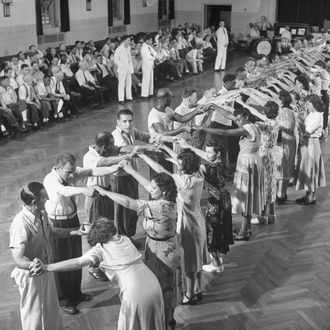
Some of the most purely joyful moments I’ve had in the past couple years have come while dancing. Sometimes at contra dances, which are nerdy and sweaty and call for you to surrender to the pleasure of forming patterns in a group. Also at No Lights No Lycra, a weekly dance party (held in cities around the world) where you can’t see anyone besides their vague outline, and you dance as hard as you can, however you want, without worrying what anyone thinks of you. (At one No Lights No Lyrca event, a Ke$ha song came on and by the end of it I felt like my mind and body had melded and that my soul was a candle. It was wild.)
A small new study suggests that older women who dance experience lower rates of disability than their non-dancing peers (specifically they are 73 percent less likely to develop disabilities). This is good news for “anyone who generally hates to exercise,” according to one Psychology Today writer. As the study’s lead author said in a statement: “Although it is unclear why dancing alone reduced the risk of activities of daily living disability, dancing requires not only balance, strength, and endurance ability, but also cognitive ability: adaptability and concentration to move according to the music and partner, artistry for graceful and fluid motion, and memory for choreography.”
It makes me think of Rosecrans Baldwin’s distressing GQ story from a few weeks ago about “L.A.’s Cult of Betterness,” where at the end he finds comfort and release at an Ecstatic Dance gathering there. It was so compelling that I booked my own ticket for an Ecstatic Dance in New York, but by the time the event rolled around (a few weeks later), I didn’t really feel like it.
Maybe instead of lunch breaks we could have a dance breaks. The dances would be synchronized, and everyone would be required to have fun.




